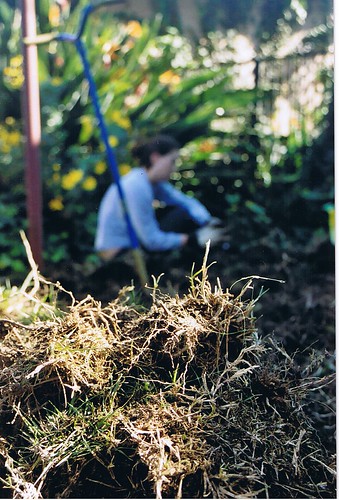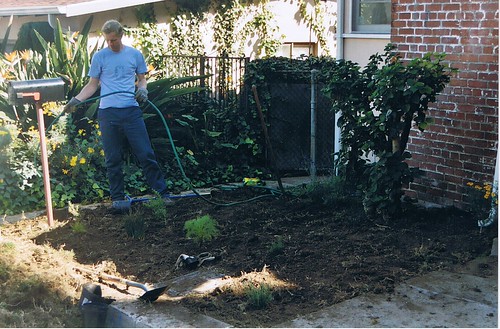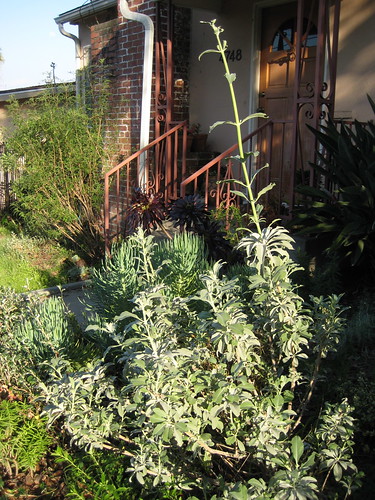We started by digging up the pitiful grass lawn and pulling out all the grass clumps and runners we could. I remember the ground was exceptionally hard, and removing grass roots was extremely tedious. If I did this now, I would use the sheet mulching method.

After we removed the grass and loosened the hard-packed soil as much as possible, we put in our native plants. Some of them thrived, but others, sadly, didn't make it and were replaced by new drought-tolerant shrubs. The little plant on the far right with the yellow flowers is now a giant, bushy copper canyon daisy that nicely frames one side of the front steps. (You can see it on the far left side of the "after" shot below.)

In all, I think the original planting took two days of very hard work. This was followed by extensive grass removal for the next two years or so. I know, that sounds annoying, doesn't it? It kind of was. BUT, now the yard requires barely any maintenance. I just water it once every two weeks or so in the dry season and prune back some of the bushier plants when they grow too far into walkways.
Five years later, the front yard looks like this.

I'm pretty happy with our results. Xeriscaping can be hard work. But, spread over a number of years, caring for a garden of native plants is way less time-consuming than a grass lawn.
More on our drought-tolerant front yard here and here.


It looks so nice! The only problem we have with our xeriscaping is that the darn squirrels keep biting holes in the drip irrigation lines. I even tried putting out water for them to drink, but it didn't help. Otherwise, though, we love it. There are beautiful things in bloom for many months of the year, and many surprises, lots of textures, and very few weeds, little pruning, etc.
Amazing! And so sensible. I live in southern BC (Canada)and here we don't need to water our lawns because it rains plenty (though some people do it anyway because they want a perfectly lush lawn rather than a 90% lush lawn!), but nonetheless I have started seeing lawns as a tremendous waste of growing real estate. Even if you're not a vegetable grower, the lawn could host native flowers that are bee-attracting or other native plants that don't require much maintanance or water. In California and other dry areas I just am blown away that people waste so much on grass.
(ps - I'm the person you helped with links on email earlier this week - thanks again!)